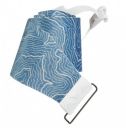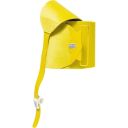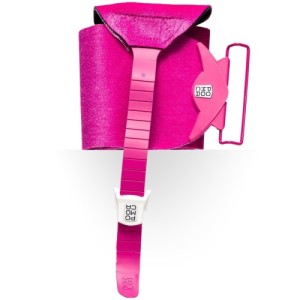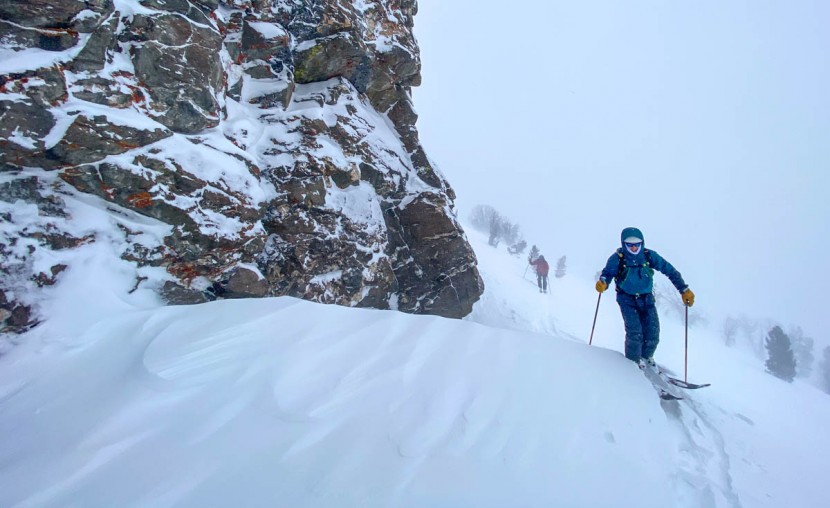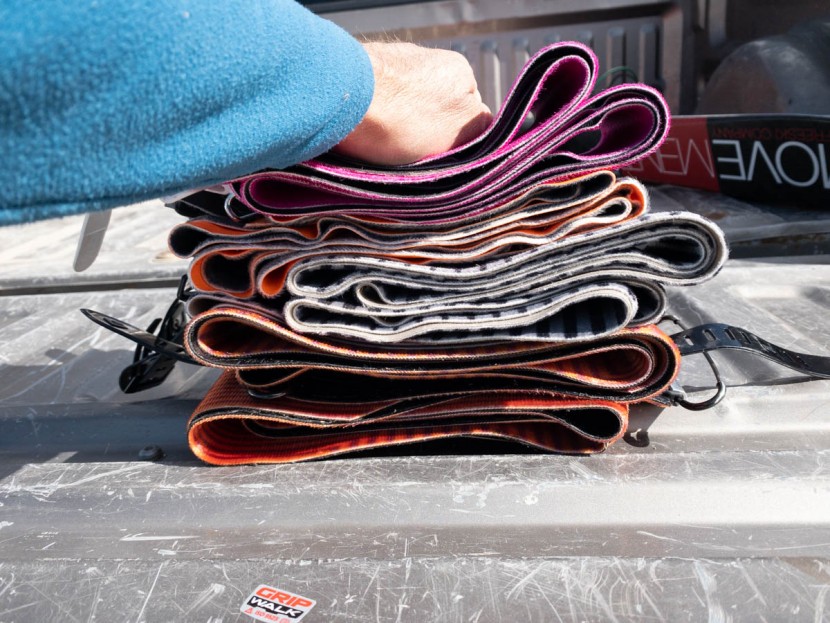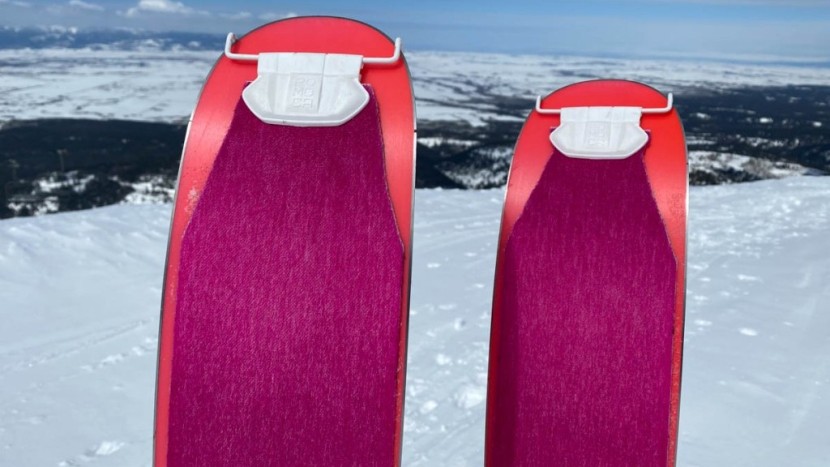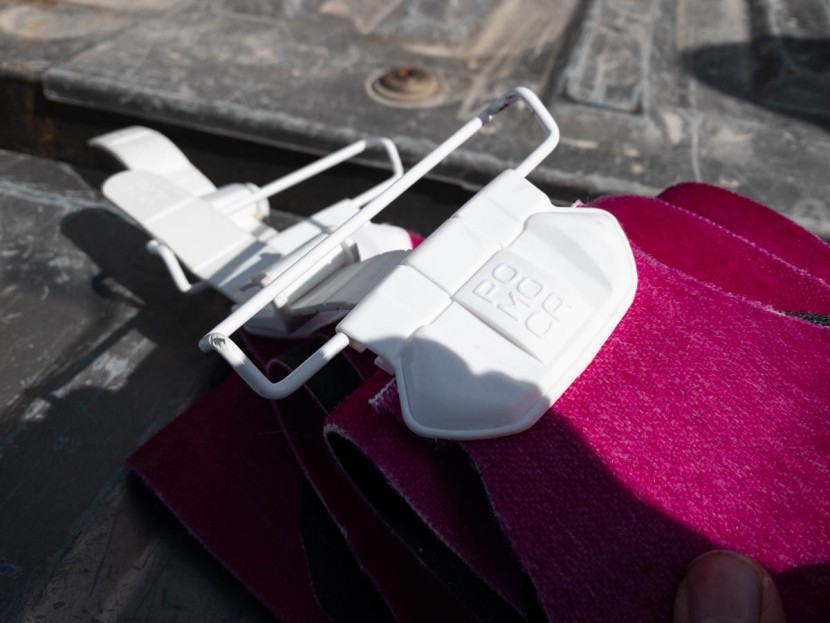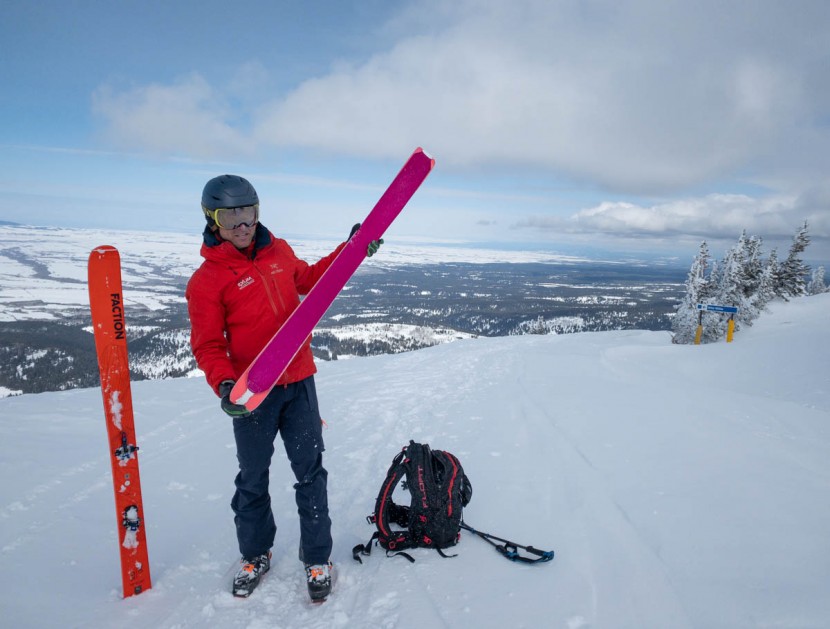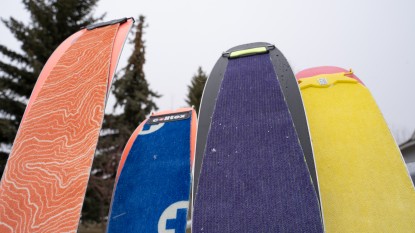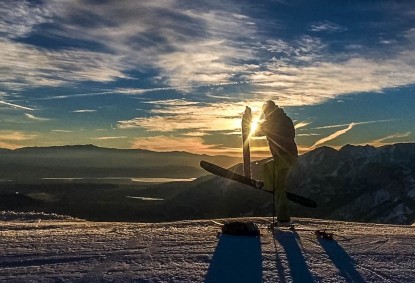Pomoca Free Pro 2.0 Review
Our Verdict
Compare to Similar Products
 This Product
Pomoca Free Pro 2.0 | |||||
|---|---|---|---|---|---|
| Awards | Top Pick for High Speed Performance | Best Climbing Skin with Cleanable Glue | Best Climbing Skin with Traditional Glue | Best Bang for the Buck | |
| Price | $230 List Check Price at Amazon | $200 List | $259 List Check Price at Backcountry | $210 List | $175.96 at Evo Compare at 2 sellers |
Overall Score  |
|||||
| Star Rating | |||||
| Bottom Line | For skilled skinners and efficiency hounds on cold snow there are no better skins available | All skin performance is balanced; given our experience with skiing and with reviewing, we find this skin strikes an ideal balance of a variety of factors | We want to continue testing to gain confidence in the longevity of the adhesive, but our testers liked almost everything about these well-balanced skins | Climbing skins inherently strike compromises; winner of our top award, it balances competing demands better than any other | Every backcountry skier can use these, especially those that are cost sensitive |
| Rating Categories | Pomoca Free Pro 2.0 | Contour Hybrid Mix | Montana Montamix Ad... | Pomoca Climb Pro S... | Pomoca Climb 2.0 |
| Glide (30%) | |||||
| Portability (20%) | |||||
| Glue Integrity (20%) | |||||
| Grip (15%) | |||||
| Icing and Glopping Resistance (10%) | |||||
| Compatibility (5%) | |||||
| Specifications | Pomoca Free Pro 2.0 | Contour Hybrid Mix | Montana Montamix Ad... | Pomoca Climb Pro S... | Pomoca Climb 2.0 |
| Measured Weight (lbs per pair) | 0.93 | 1.21 | 1.13 | 1.03 | 0.99 |
| Material | 70% Mohair, 30% Nylon | 70% Mohair, 30% Nylon | 65% Mohair, 35%Nylon | 70% Mohair, 30% Nylon | 70% Mohair, 30% Nylon |
| Weight per Pair (Based on Ski Tested) | 423 g for DPS Pagoda Tour CFL 105 180 cm | 551 g for Blizzard Zero G 95, 180 cm | 512 g for K2 Wayback 106 179 cm | 468 g for Atomic Backland 95 177 cm | 448 g for Dynastar M99 Tour, 178 cm |
| Weight per Ski Width (grams/mm) | 2.02 | 2.65 | 2.42 | 2.46 | 2.25 |
| Glue | Traditional | Hybrid Glue | Fusiontec Adhesive | Traditional | Traditional |
| Tip Attachment | Rigid tip loop | Rigid tip loop | Rigid tip loop | Rigid tip loop | Rigid tip loop |
| Tail Attachment | Rubber strap and cam hook | Vinyl strap and cam hook | Vinyl strap and cam hook | Rubber strap and cam hook | Rubber strap and cam hook |
| Ski Compatibility | Universal | Universal | Universal | Universal | Universal |
Our Analysis and Test Results
Product Update — November 2024
There are some meaningful updates to the Pomoca Free Pro 2.0 moving into the future. This skin is slowly being phased out in light of the Free Pro. Despite dropping the “2.0” designation, this new version will have new tip and tail clips, as well as a new PFC-free treatment. This turnover will be a gradual process, and we will continue to link to the Free Pro 2.0 as long as it remains readily available.
The bright pink Pomoca Free Pro 2.0 is a fast friend on big, cold ski days. The blended plush is low friction, high glide, with just the right amount of grip. The thin backing is light, but stiff enough to keep from rolling or tangling. The glue is Pomoca's proven, proprietary recipe. Budget-conscious skinners and those newer to skinning will want to steer clear.
Glide
The Free Pro 2.0 skin is made of skimo race formula plush stuck to a stiffer backing. Skimo racers seek maximum glide for maximum efficiency. Per square inch these are among the fastest gliding skins we can remember using. Only discontinued all-plastic “fish scale” style skins are faster, and those never gripped as well as these do.
Gliding skin performance isn't just for flats and racer types. Every step forward you make against resistance from your skins. Reduce that resistance and every step gets easier. Make every step easier and you can do more of them. More steps equals more skiing. You win. The enhanced glide of these nylon/mohair skins is most noticeable on dry winter snow (as opposed to melt-freeze snow). They'll glide better than others on MF snow too, but not by as much.
Portability
The Free Pro 2.0 is lighter and more compact (for a given ski geometry) than almost any other traditionally constructed skin we have tested. It is hard to directly compare skin weight and bulk when we test with so many different skis. However, we have enough overlap to be able to make rough comparisons.
The tester pair of Free Pro 2.0 skins we have weigh 496 grams. They are cut for 103mm underfoot skis that are 180 cm long. Other traditional skins we have that are cut for skis in this dimension range are at least 50 grams heavier. The only skins that are appreciably lighter are those made with silicone “glue” instead of more common hot-melt glue.
Glue Integrity
We love Pomoca's glue formulation more and more. We've heard that they equip different skins (and even skins sent to different parts of the world) with different glue formulations. To be honest, we have not noticed any difference in the glue formulations on an ever-widening array of Pomoca products we have used. The glue on the Free Pro 2.0 has served us just right.
It holds on like it should and lets go with minimal hassle. As we have mentioned elsewhere, glue and backing need to work together. The glue can only do so much. If it is too sticky it gets unwieldy when not on your skis (or when you wish to get them off your skis). The primary glue failure mode is the skin fabric rolling back from the tip of your ski. Stiffer skin fabric helps slow this roll. The Pomoca Free Pro 2.0 is ultralight, but stiff enough to fight the roll. Other ultralight skins have been made of much softer fabric, with corresponding glue failure issues. Given our long-term experience with other Pomoca skins, we fully expect the Free Pro 2.0 glue to hold up over multiple seasons.
Grip
Grip is the opposite of glide. For the most part, we see symmetrical performance. Something that glides well doesn't grip as well. That is true for these Pomoca Free Pro 2.0. They don't grip very well, comparably. The good news is that you don't need as much grip as you might think. These grip as much as you need. Balanced technique and proper posture enhances your efficiency and your grip. It is a win-win. Faster skins reduce energy expenditure when you stride forward, and they train and reward good biomechanics for grip.
Under skilled skinners, this Pomoca formulation grips as well as it needs to. They grip steeper than your biomechanics are tuned for. Sure, with other skins you can go straight up 30+ degree slopes. However, extensive experience and informal studies have shown that 30+ degree skin tracks are more strenuous, all else equal, than those under 20 degrees. At that gentler angle of attack, the Pomoca Free Pro 2.0 grips just fine. Don't get caught up in the idea that “greater grip” is all-around better. Of course, there will be times you slip out. Those times are exhausting, to be sure. Address those moments with planning, care, attention, and balance, not with grippier (and therefore heavier with lesser glide) skins.
Icing and Glopping Resistance
Here we assess the fabric/plush side and its propensity to collecting snow and ice in certain conditions. In the right conditions, everything will collect snow and ice. If a sheet of glass (picture your car windshield) can ice up, your skins can definitely ice up. Whether it is your windshield or your skins, the problem arises when a surface goes back and forth across the freezing point of water. Warm up your skins (with sun or liquid water, even if that liquid water is minuscule and mixed in with snow crystals) and then expose them to cold (sub-freezing) snow and you get icing. No skin material is exempt from this.
Of course, some ice more than others. The key to prevention is two-fold. First, use technique that, especially in those melt-freeze conditions, continuously scrubs accumulations of freezing snow/water matrix from your skins. The good news is that this technique -sliding your skis forward- is the same as the technique that is best for your biomechanics. Next, your skin material can help by minimizing the absorption or retention of liquid water. Water-resistant coatings, whether applied at the factory or in the field ("skin wax") do this to all skin materials. In terms of what little role the material has in icing, this Pomoca is ok. The hybrid nylon/mohair blend is widely proven and acceptable. As always, we have found that technique and waxing are more important and make a bigger difference than any differences in material.
Compatibility
You can buy the Pomoca Free Pro 2.0 in a configuration that will work for all but the most giant backcountry skis. Available in 123mm and 140mm, many skis are compatible with the universal design of these skins.
The “three dimensional” tip loop is especially forgiving of various tip shapes. Only “hook” type tip fixations are more versatile than this sort of rigid tip wire. The latest Pomoca tail hook suffers a little bit to fit over the thickness of ski tails. It can be stretched to fit and stays wide enough through a days tour, but it eventually shrinks back down and needs to be re-stretched before easily using it again.
Should You Buy the Pomoca Free Pro 2.0?
The Pomoca Free Pro 2.0 is a fast, light, high-performance tool. These are expensive, high-performance skins. The thin fabric is lighter than average, which makes them compact and low energy in your pack. On the other hand, they reward care, cold snow, and good skinning posture and track setting. Further, the blended construction will wear out faster than nylon and last longer than full mohair. You don't choose these as a value. You choose these for maximum performance and efficiency.
What Other Climbing Skins Should You Consider?
The demanding care of the Free Pro 2.0 likely aren't for every skier. While these skins optimize efficiency, we'd suggest the Pomoca Climb Pro S Glide for most skiers. The Climb Pro S Glide performs better across the board, and doesn't require the same level of attention. But if you're aiming to eke out that performance advantage, then the Free Pro 2.0 is likely the better option between the two.



